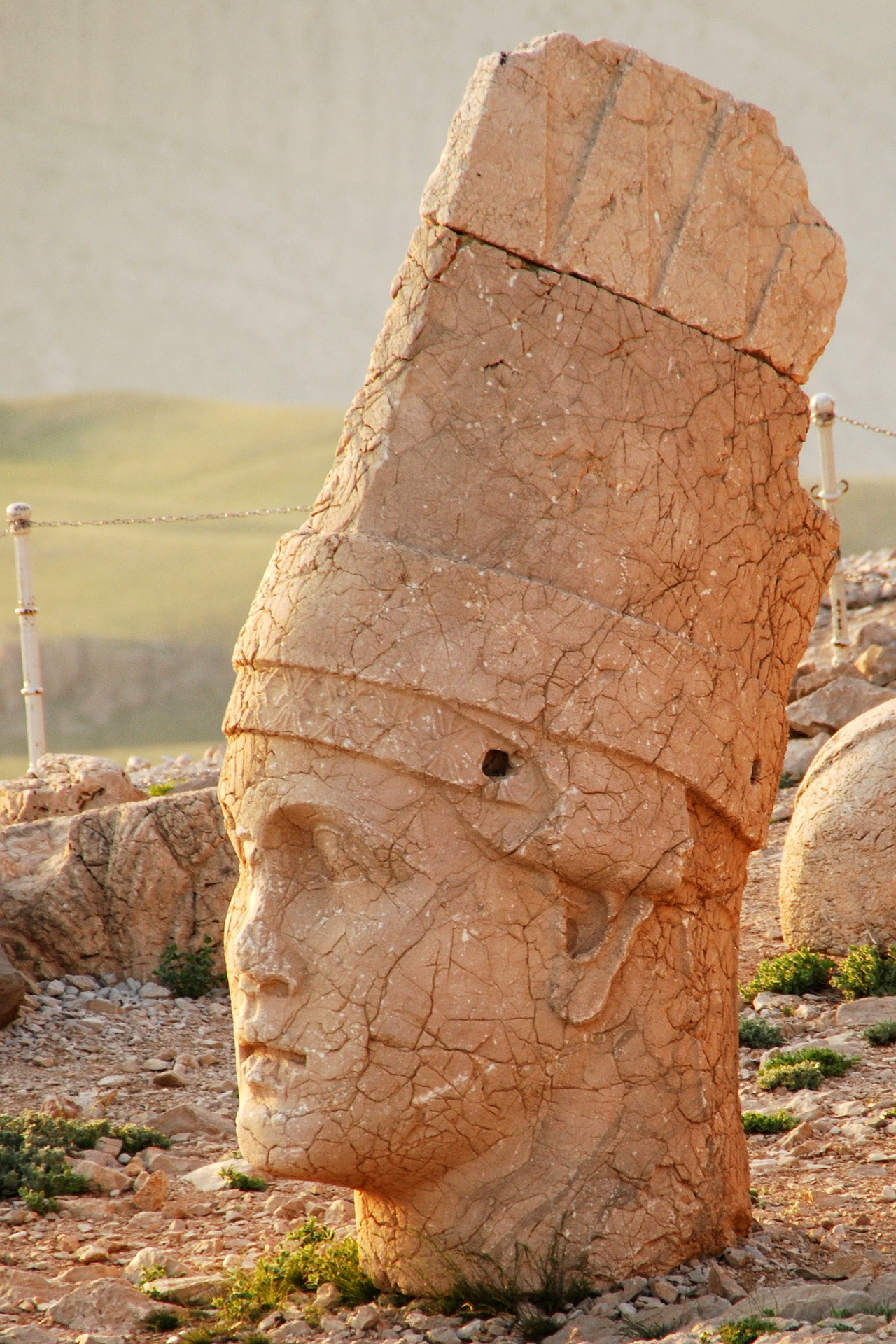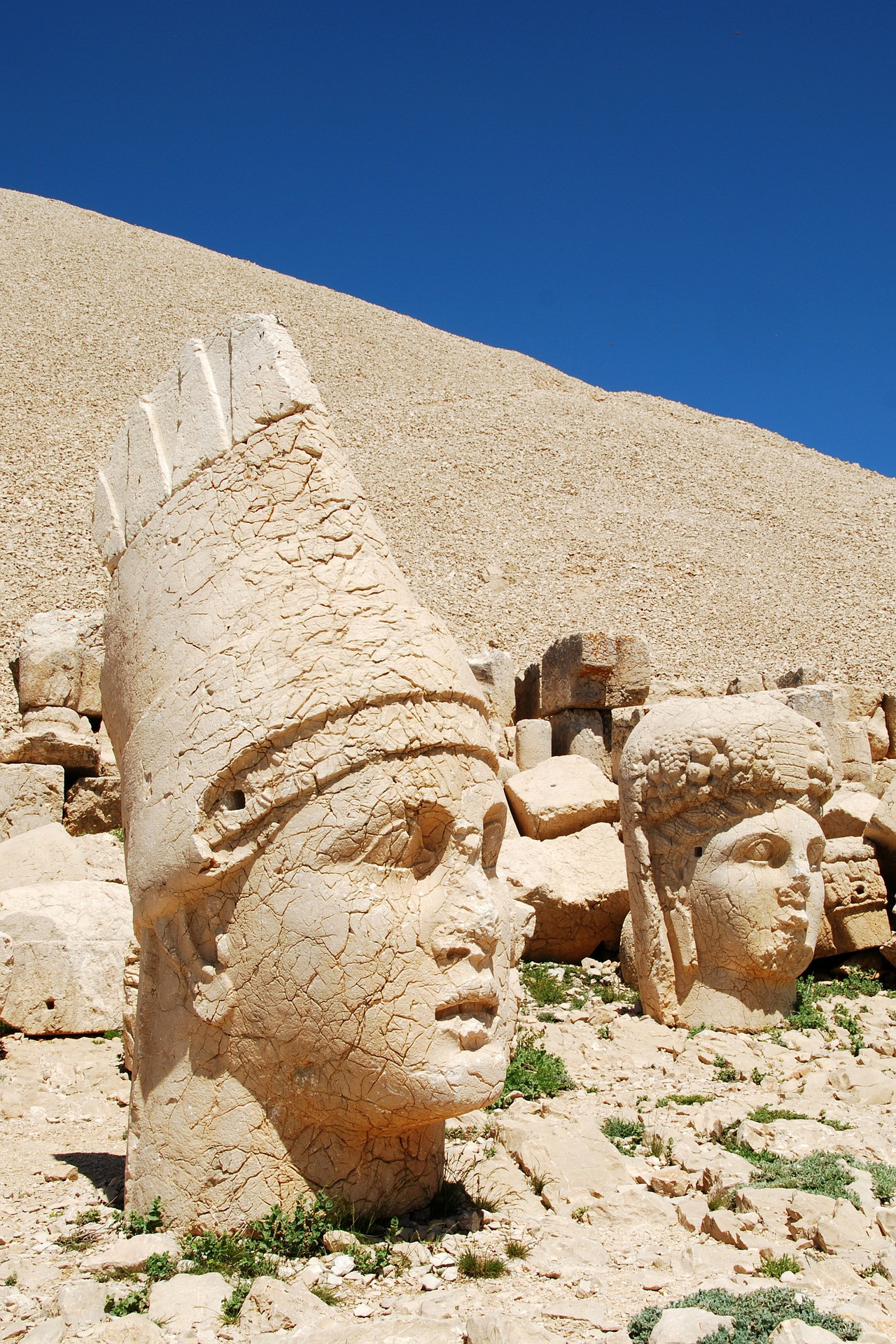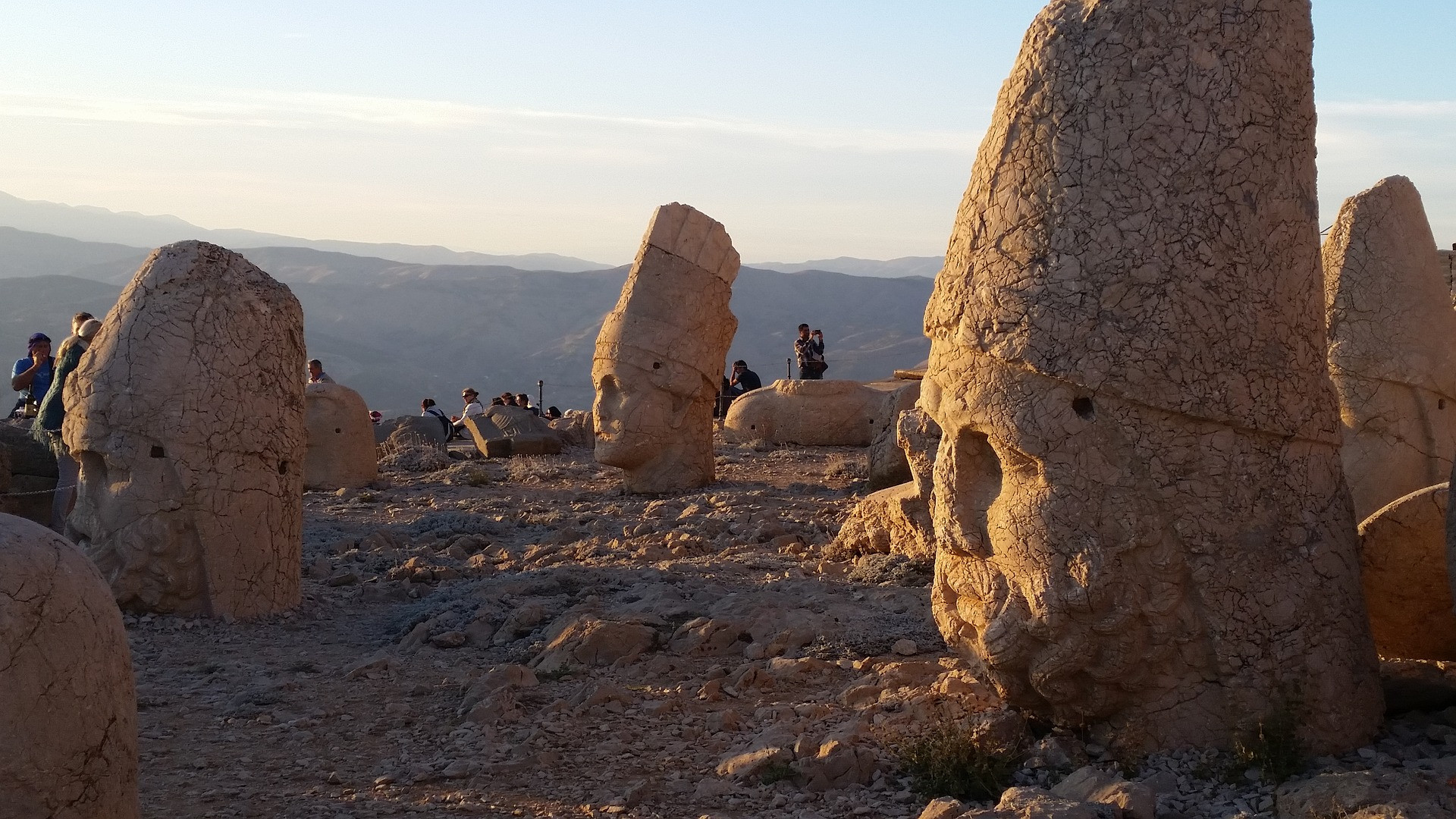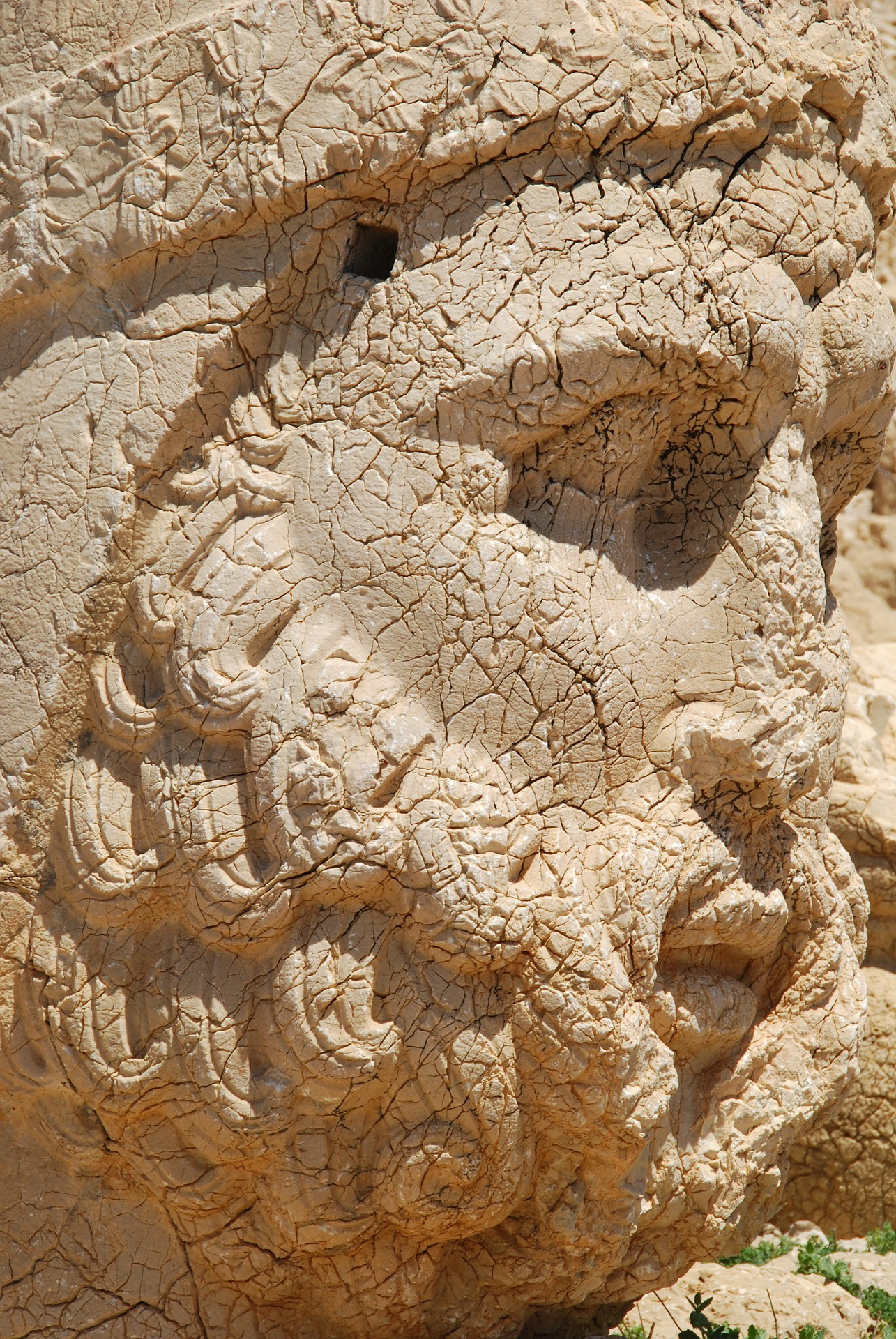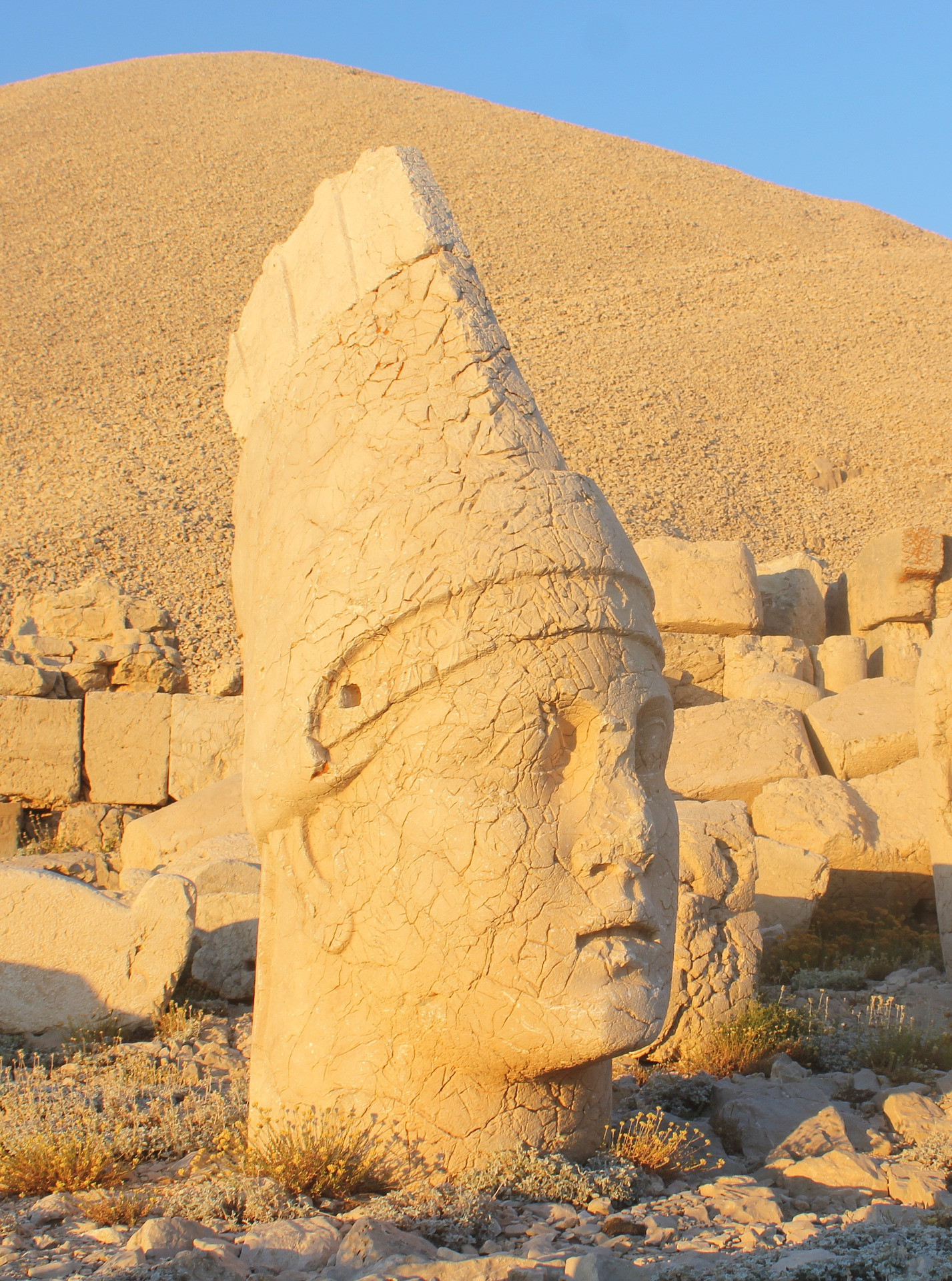The mausoleum of Antiochus I (69–34 B.C.), who reigned over Commagene, a kingdom founded north of Syria and the Euphrates after the breakup of Alexander's empire, is one of the most ambitious constructions of the Hellenistic period. The syncretism of its pantheon, and the lineage of its kings, which can be traced back through two sets of legends, Greek and Persian, is evidence of the dual origin of this kingdom's culture. The Commagene Kingdom dominated the region for almost two centuries between 109 BC and 72 AD, and it appears to be a remarkable civilisation unifying the cultures and beliefs of Macedonian and Persian civilisations.
One of the essential rituals of visiting Mount Nemrut is enjoying the sunrise from the summit. King Antiochus, revering his ancestors in Western and Eastern civilisations, erected giant statues of gods on the East and West terraces and cited their names both in Persian and Greek. So visitors enjoy watching the unique sunrise together with the statues of gods who have been witnessing it for two thousand years.
The Mount Nemrut Tumulus is in Kahta county which is 86 km east of Adıyaman city. There are scheduled flights to Adiyaman Airport from Istanbul and Ankara. The best season for ascent to the Mount is the period between April and October.

